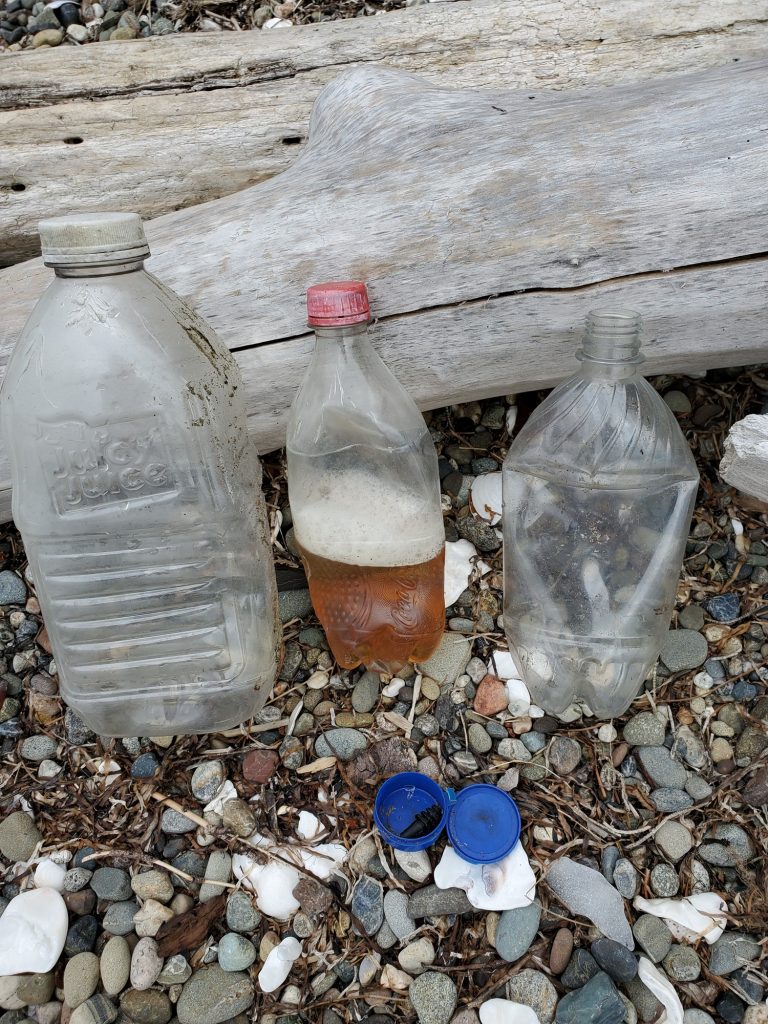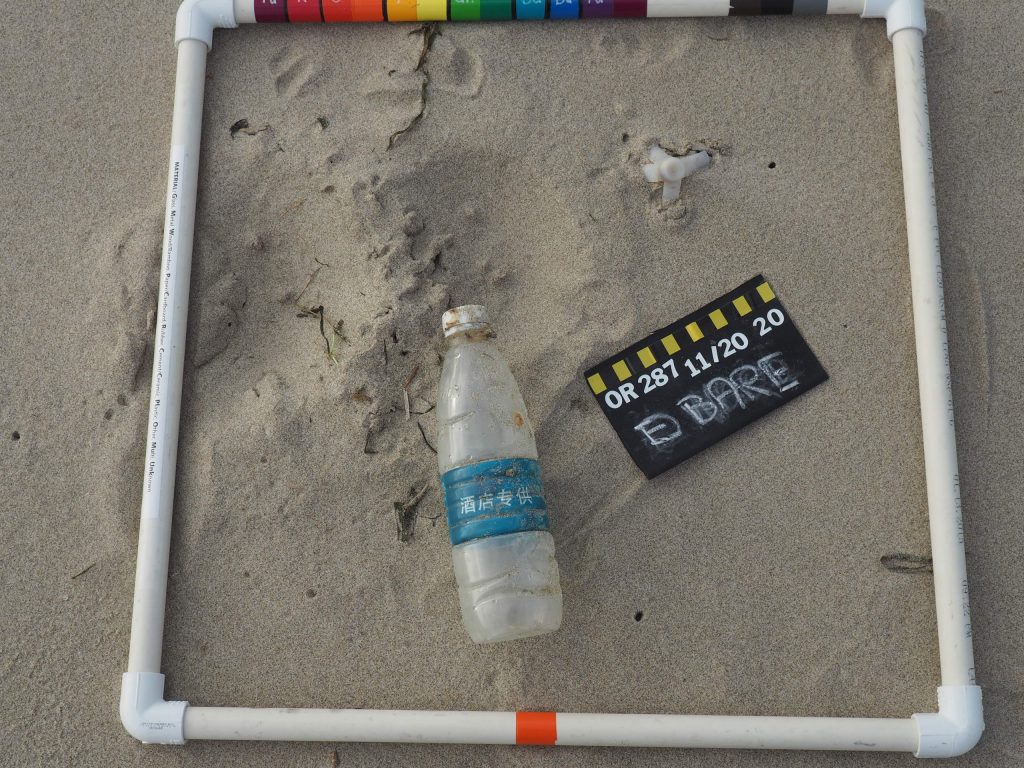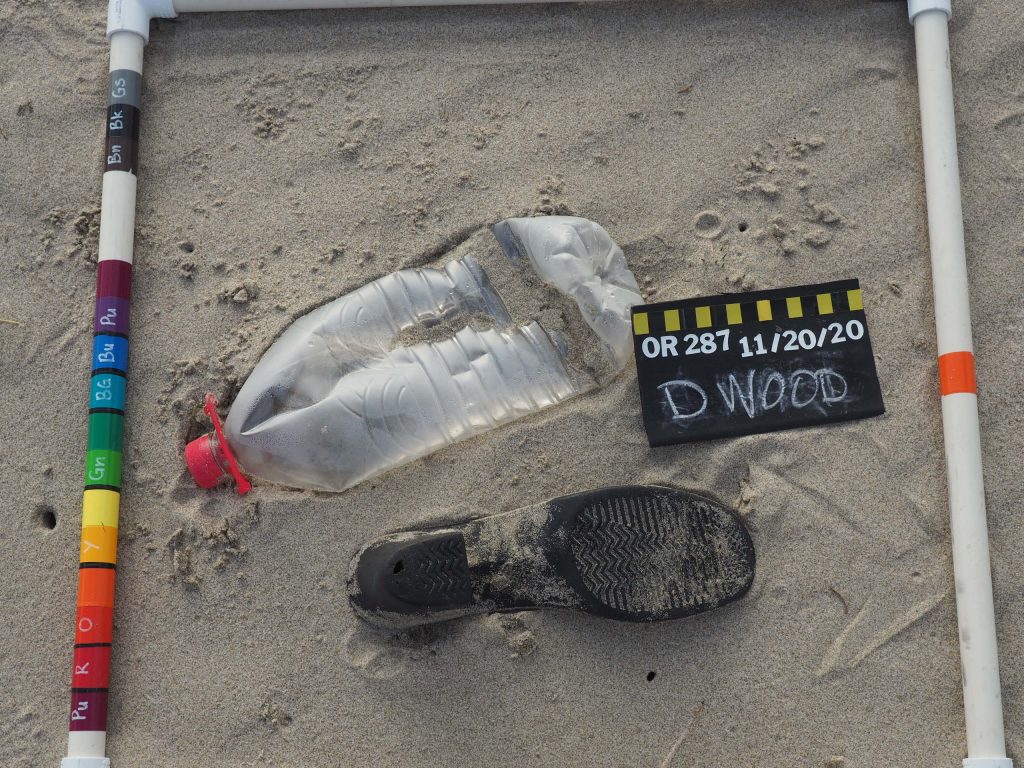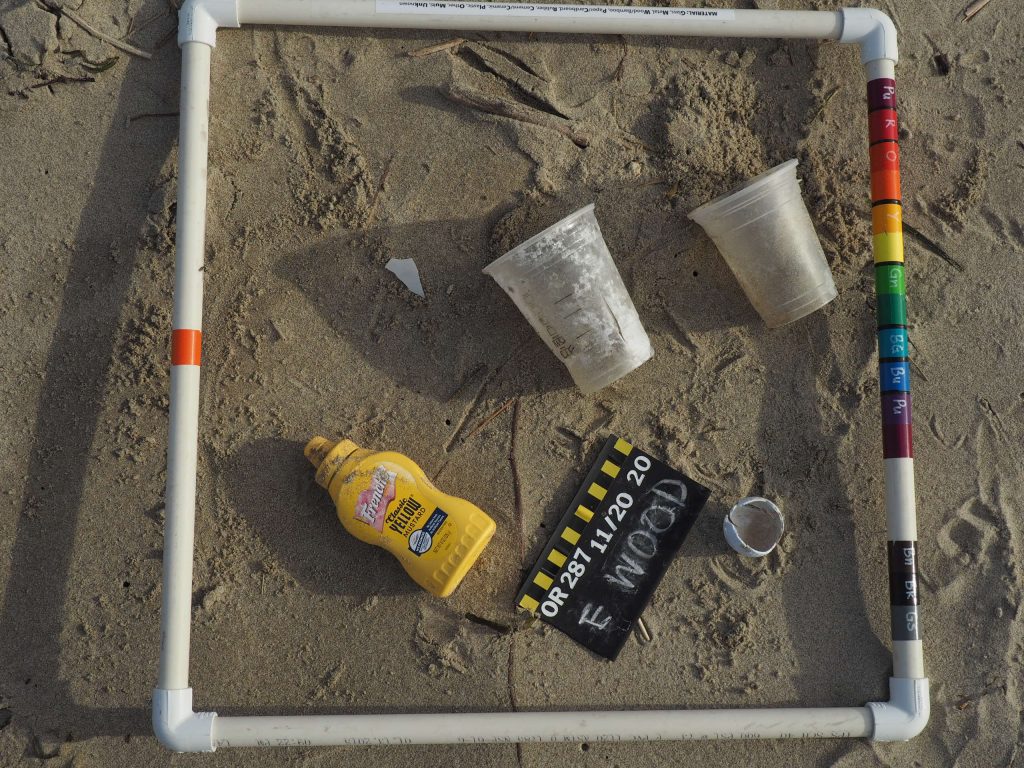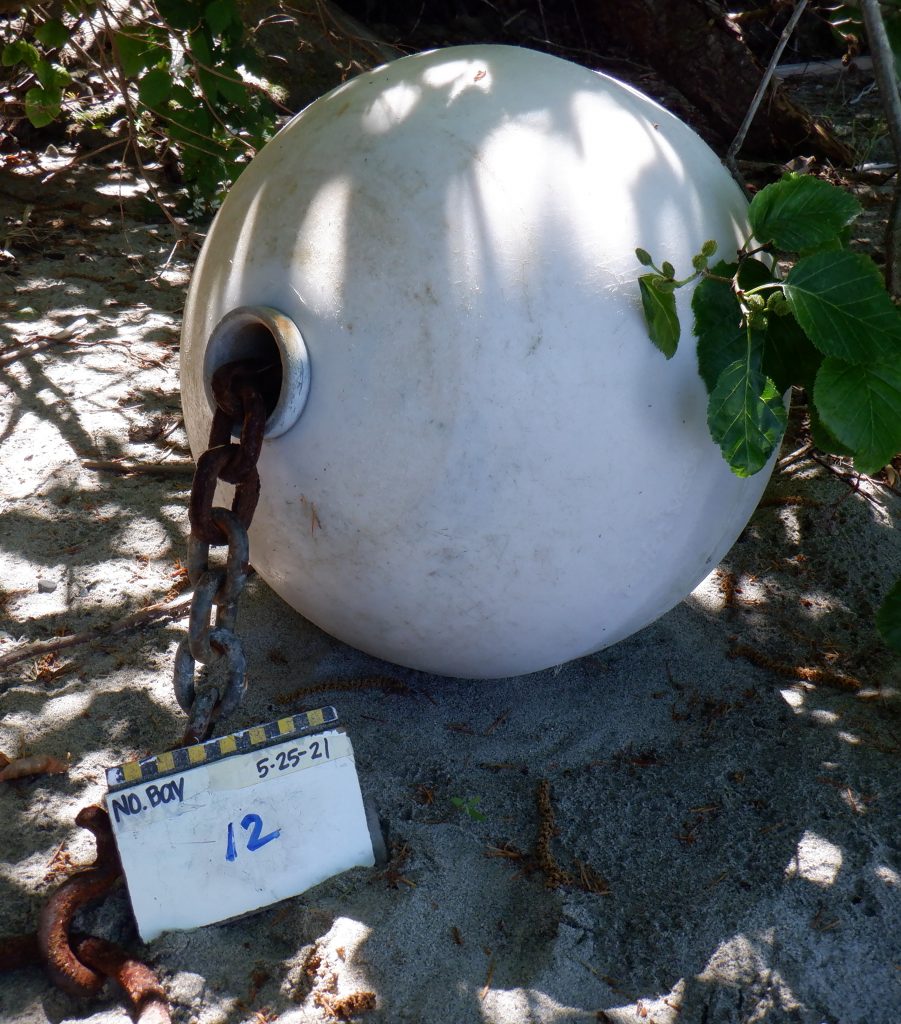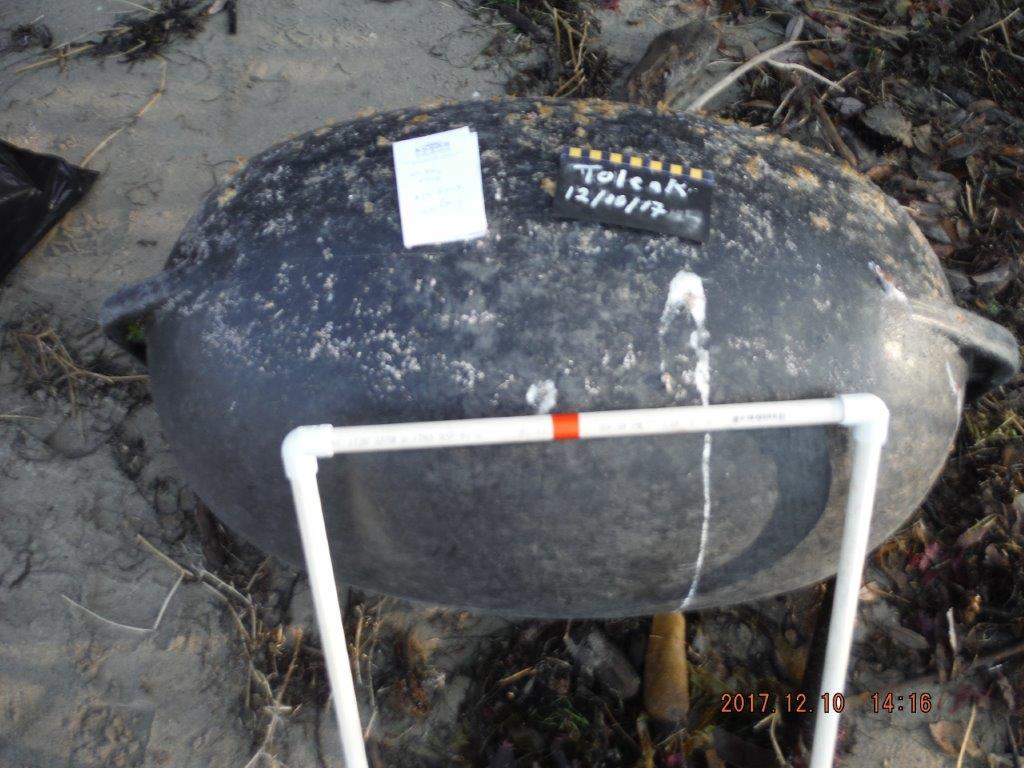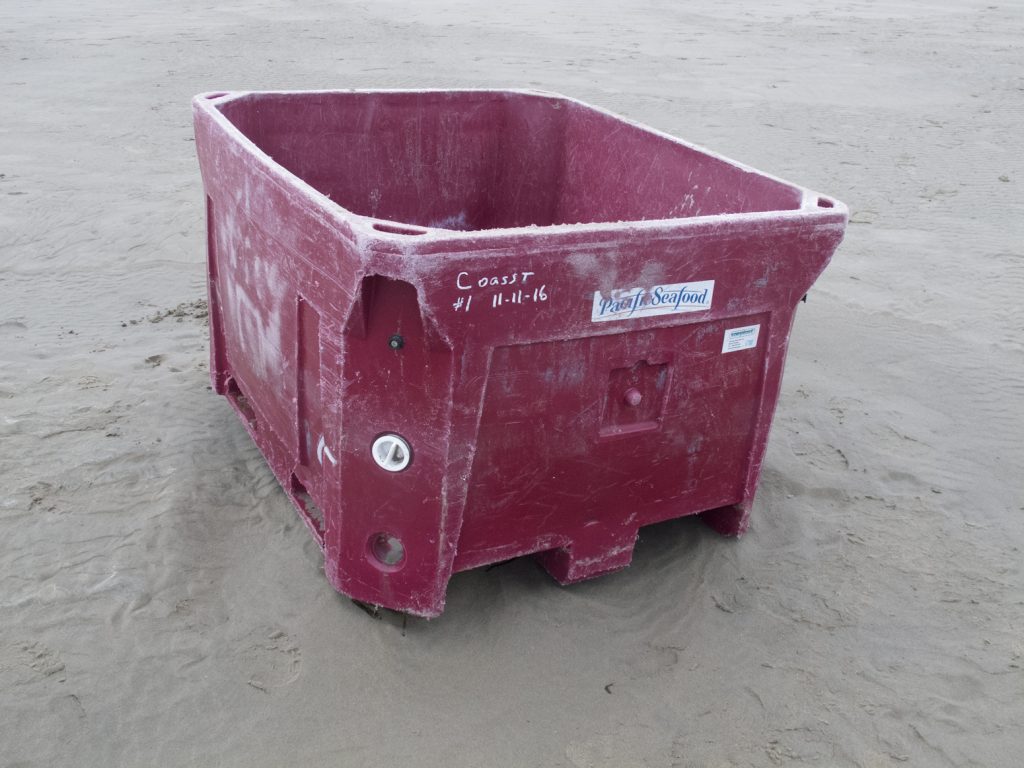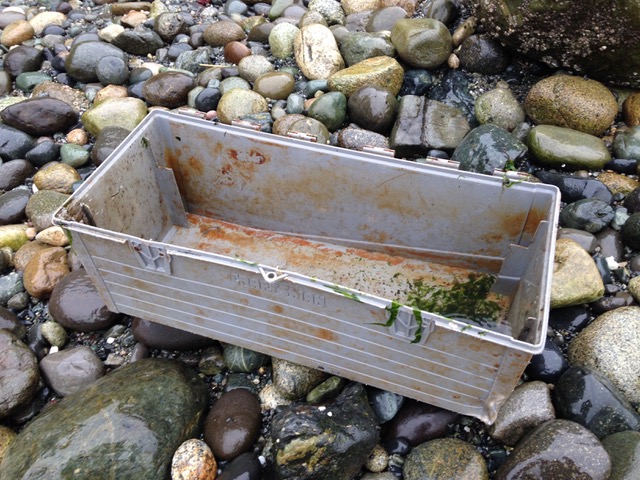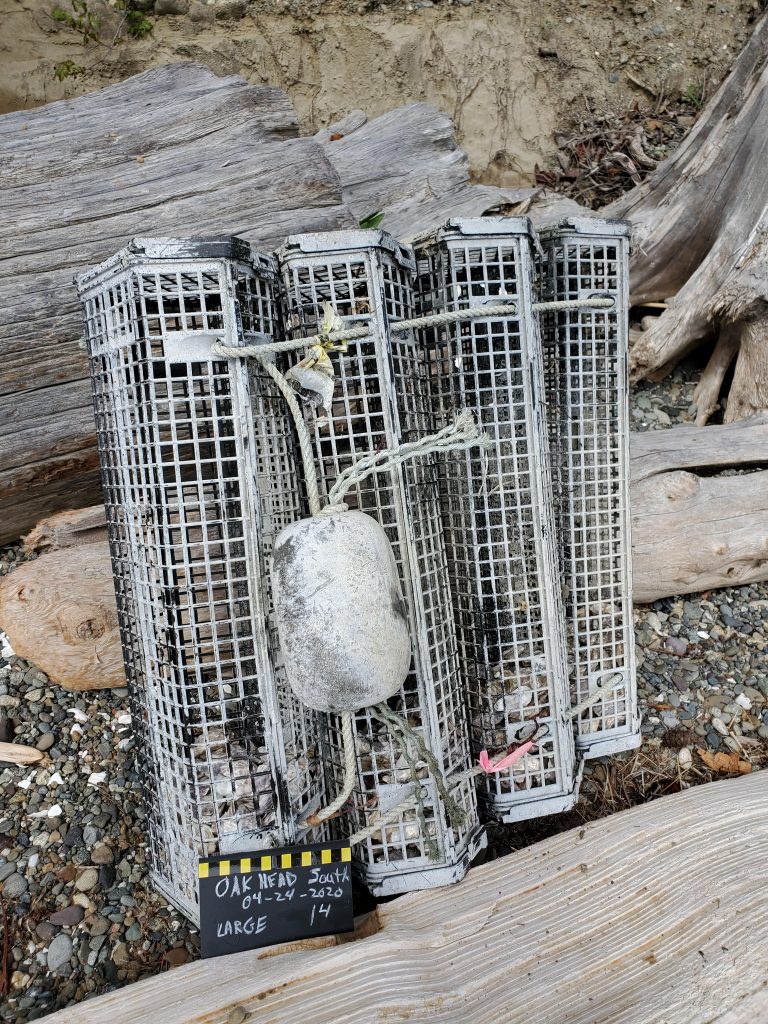A COASST “container” is an item with rigid walls that can was designed with the intention to contain something (solid, liquid, or gas). The COASST marine debris program cares about a debris item being a container (or not) for two reasons:
- Containers of any size can float high and fast in the water column if filled with a gas (including air). Those buoyant items travel differently through the marine ecosystem, so the ‘container’ characteristics (including number of openings and fill) let us tell part of the sourcing story of an individual object.
- Large marine debris items that are also open containers might accidentally trap a marine organism (like a bird or a fish) who can get in but not back out.
What are common containers?
The most common containers that we see on COASST surveys are bottles, with and without caps. If you find a bottle with liquid inside, don’t open it unless you are absolutely certain the contents are safe and easily contained! Bottles that are unlabeled may contain toxic or corrosive liquids, which might pose a threat to you or the marine environment if spilled.
- Bottles without caps (ie. parts of bottles) should be recorded with at least one opening (a broken or fragmented bottle might have additional openings). The size of these openings should also be measured and recorded.
- Bottles with caps often have no openings, and in a sealed container we ask COASSTers to additionally record the contents of the container.
- If a bottle is absolutely flattened and can no longer serve as a container, it does not need to be recorded as one. We record the state of the debris item as found.
Of course, not all containers are bottles. COASSTers often record buoys on surveys, which are certainly a type of container – designed to contain air and float on the surface of the water. A buoy that sits in the water for long periods of time may have invasive biofouling or even a foreign language because the high windage allows buoys to be pushed quickly across the ocean. Be sure to take close up photos if you discover these sourcing clues!
The largest containers found in the COASST data pose an entrapment danger to wildlife. A bird that lands inside an upright vessel may not be able to take off again. Despite the open end, large containers might be a wildlife trap at sea!
The photos included in this post were submitted by COASST partners and participants. Thank you to all of our team members who submitted excellent photos! Jill Marks (Schooner South), Roger Miller and John Goertzen (OR Mile 287), Robert and Wendy Stafford (Oak Head South), Peter and Marguerita Catching (Sunset Road North), Virginia Young (KVI Beach), Joanne Wester (North Bay Waldron), Chiggers Stokes (Toleak Beach), Cathi Block and Dawn Henton (Lost Creek Beach), Douglas Hooover (Moore Creek South), and Alan Waugh (Possession Beach).

